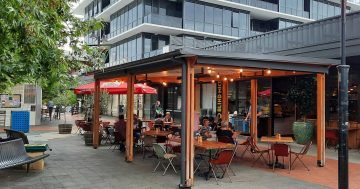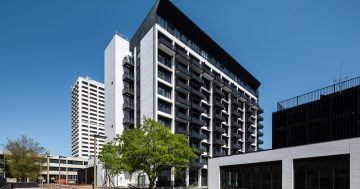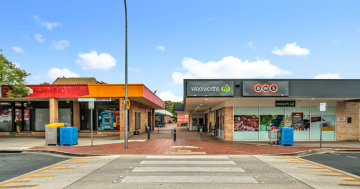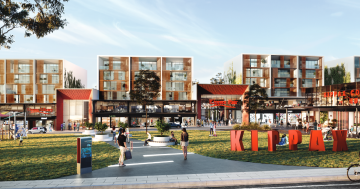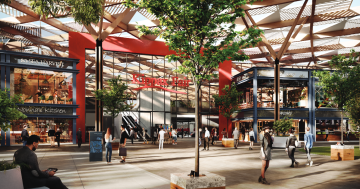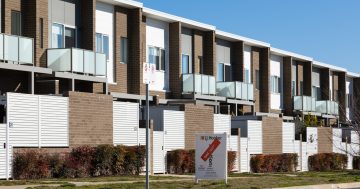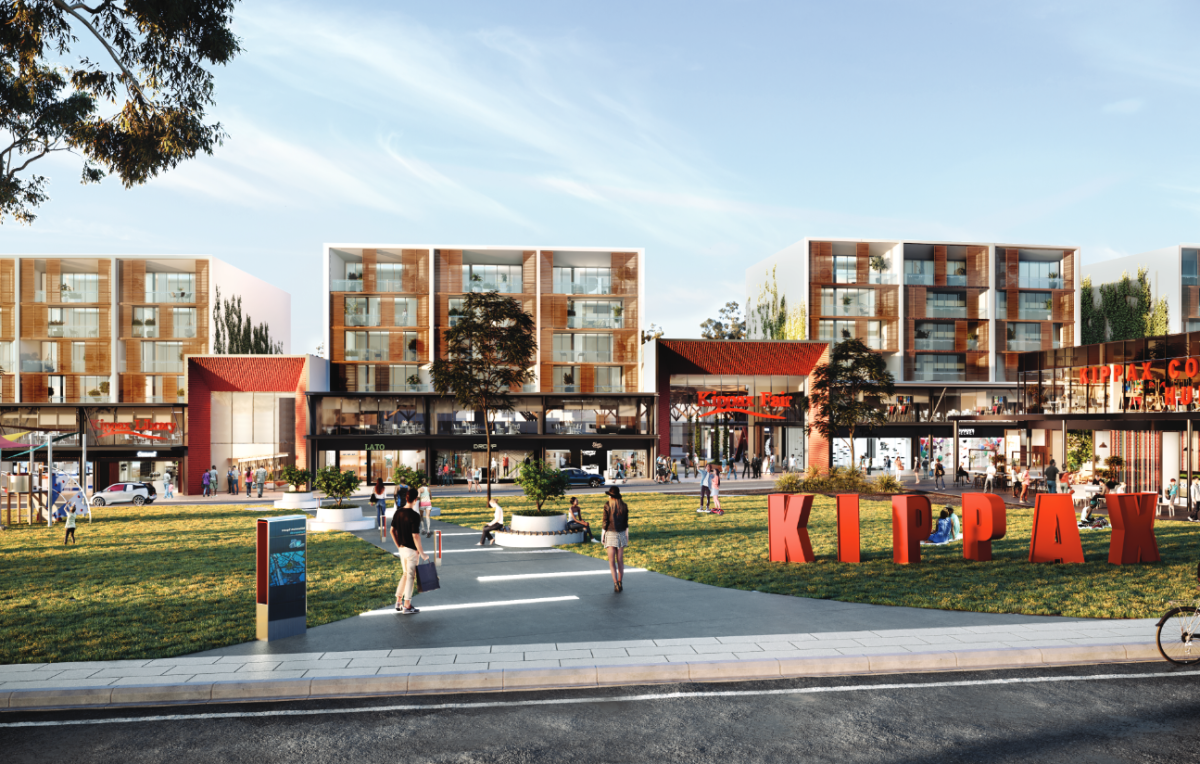
More to come? A render of the proposed redeveloped Kippax Fair, showing apartments above the shops. Image: Cox Architecture.
More of Canberra’s local shopping centres look set to be part of the new wave of infill housing if comments by new Planning Minister Chris Steel are anything to go by.
Mr Steel plans to task the Planning Directorate with how to include housing as part of a push to revitalise ageing shopping centres, seeing it as a way to provide desperately needed homes and better shops “at every shopping centre, local and group centre in Canberra”.
There are already examples of mixed-use shopping centres such as Curtin and the new Giralang shops taking shape, while the proposal for the Kippax Fair redevelopment also includes apartments.
Government master plans for the likes of the Weston Creek Group Centre also allow for potential housing.
The Property Council has jumped on the comments, saying many of Canberra’s older shopping hubs are ripe for redevelopment after communities rediscovered them during the pandemic.
Executive Director Shane Martin told Region this momentum should be maintained, especially with the need for more homes.
Mr Martin said the government could take a number of measures to encourage and incentivise such development.
“The housing crisis presents such a stark reality; the government needs to start pulling some of these policy levers to stimulate housing growth and density,” he said.
Mr Martin said the government-owned surface carparks around most shops offered huge potential as cheap land for community housing providers to develop affordable homes for low-income people, retirees and rightsizers.
Putting carparks underground would unlock that land, which the government could offer at lower rates.
He said the government should reinvest the lease variation charge from any redevelopment back into the local public realm around shopping hubs.
It also needed to ensure blocks could be amalgamated so that all shops within a development could come under a common ownership arrangement and be holistically redeveloped as part of an integrated redevelopment strategy.
Mr Martin said at present a single holdout business owner could veto a redevelopment proposal.
He also called for a change in the way rates, taxes and charges are levied when there is a mix of residential and commercial, so properties do not have to be unit-titled to avoid paying full commercial rates, even if there may only be one small shop.
Building owners should only have to pay the relevant rates based on the percentage of gross floor area in the residential and commercial components.
“It makes it more viable, and more attractive not just for ACT developers, but particularly interstate and overseas developers,” he said.
As Canberra phased out the use of gas, redevelopment of local shops also would support the inclusion of new electrical infrastructure to support the future electrification of suburbs.
“By seizing the redevelopment opportunities these areas hold, we will be able to offer a much wider variety of housing typologies than is currently available while contributing to the creation of more vibrant and viable community hearts,” Mr Martin said.
“There are excellent examples of successful mixed-use shopping centres such as the Denman Village Local Shops which are exemplars for what can be done throughout Canberra,” he said.
“We are excited to see the next phase of policy reform in planning here in the ACT, especially with a new minister who oversees both our planning and transport portfolios.”












